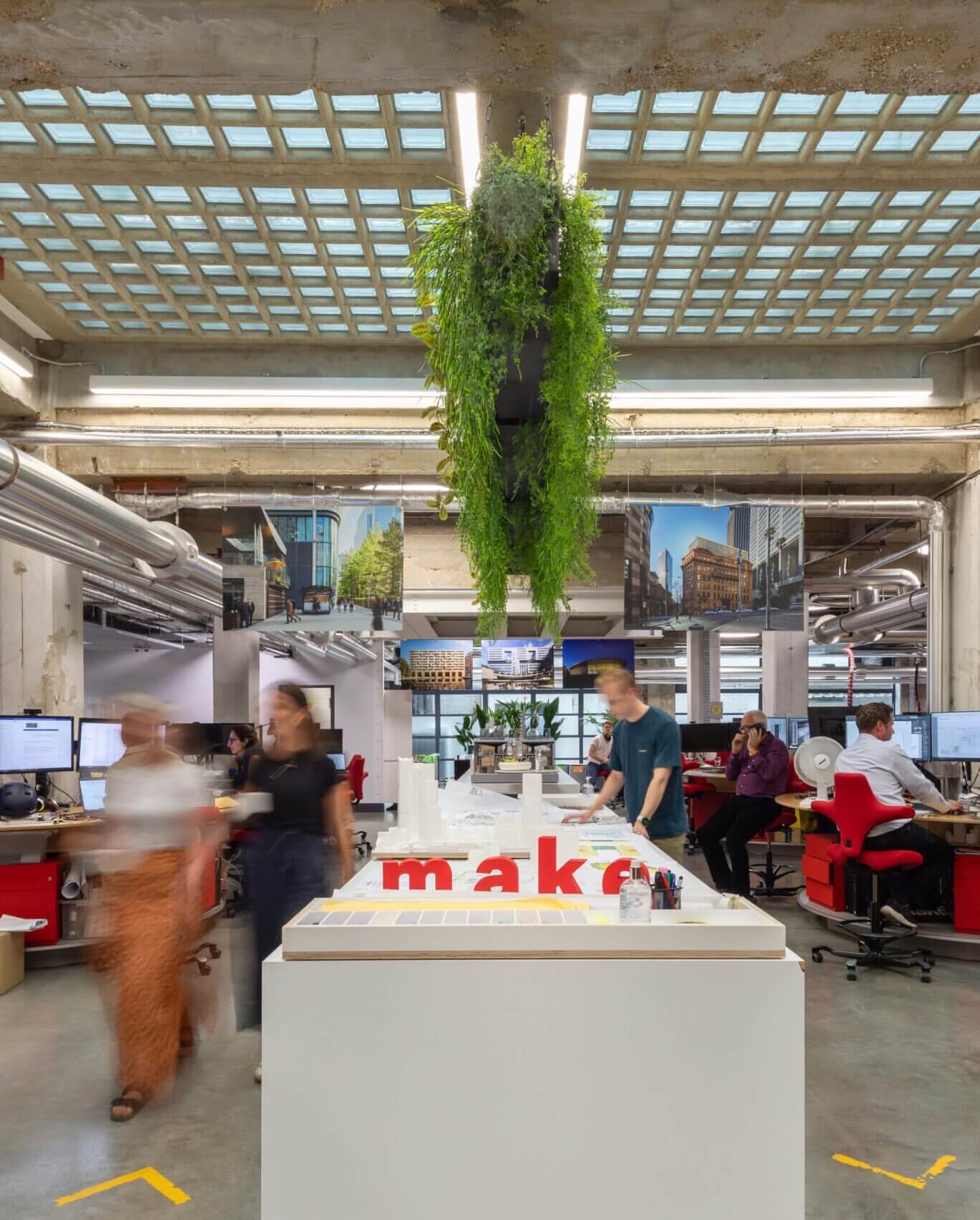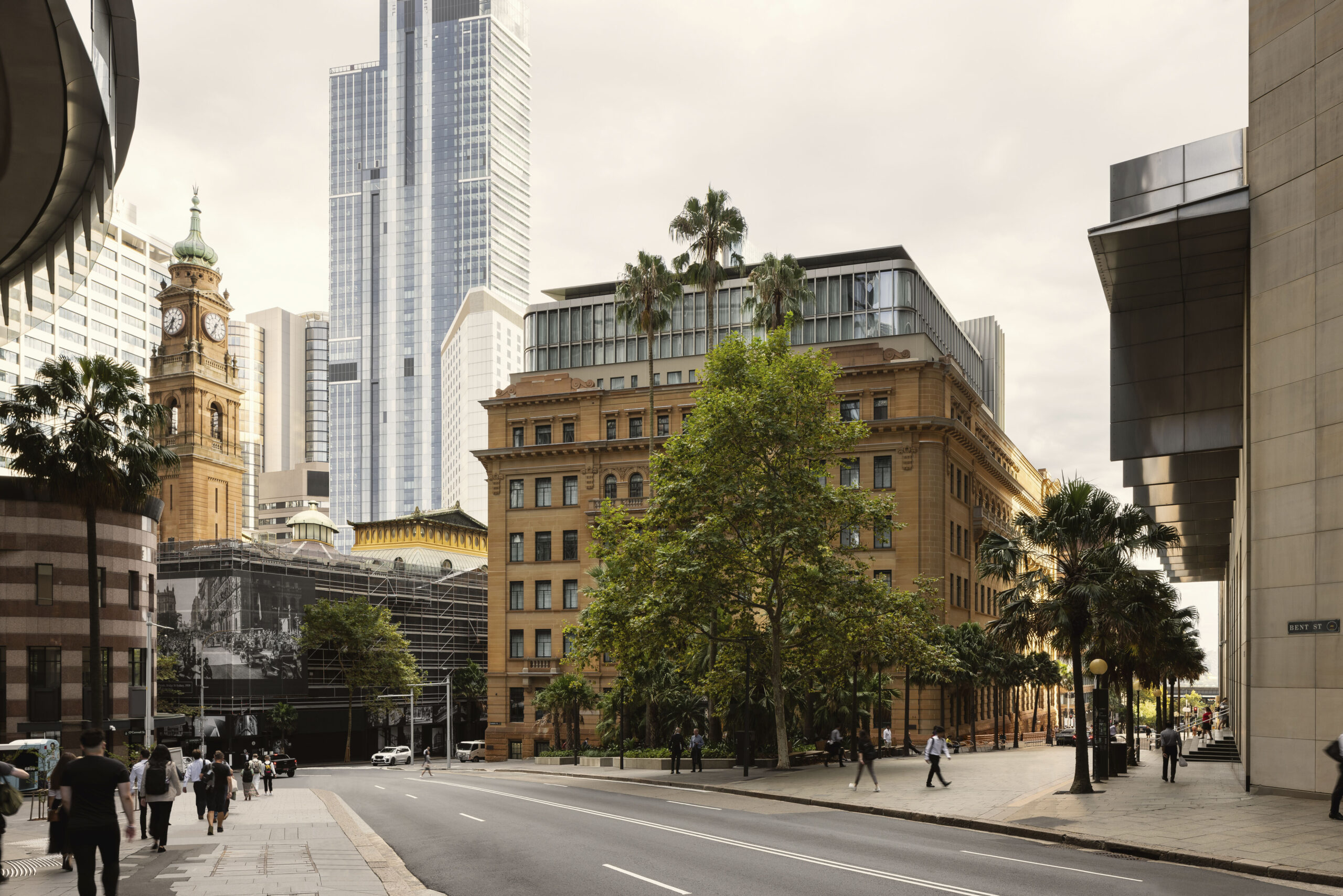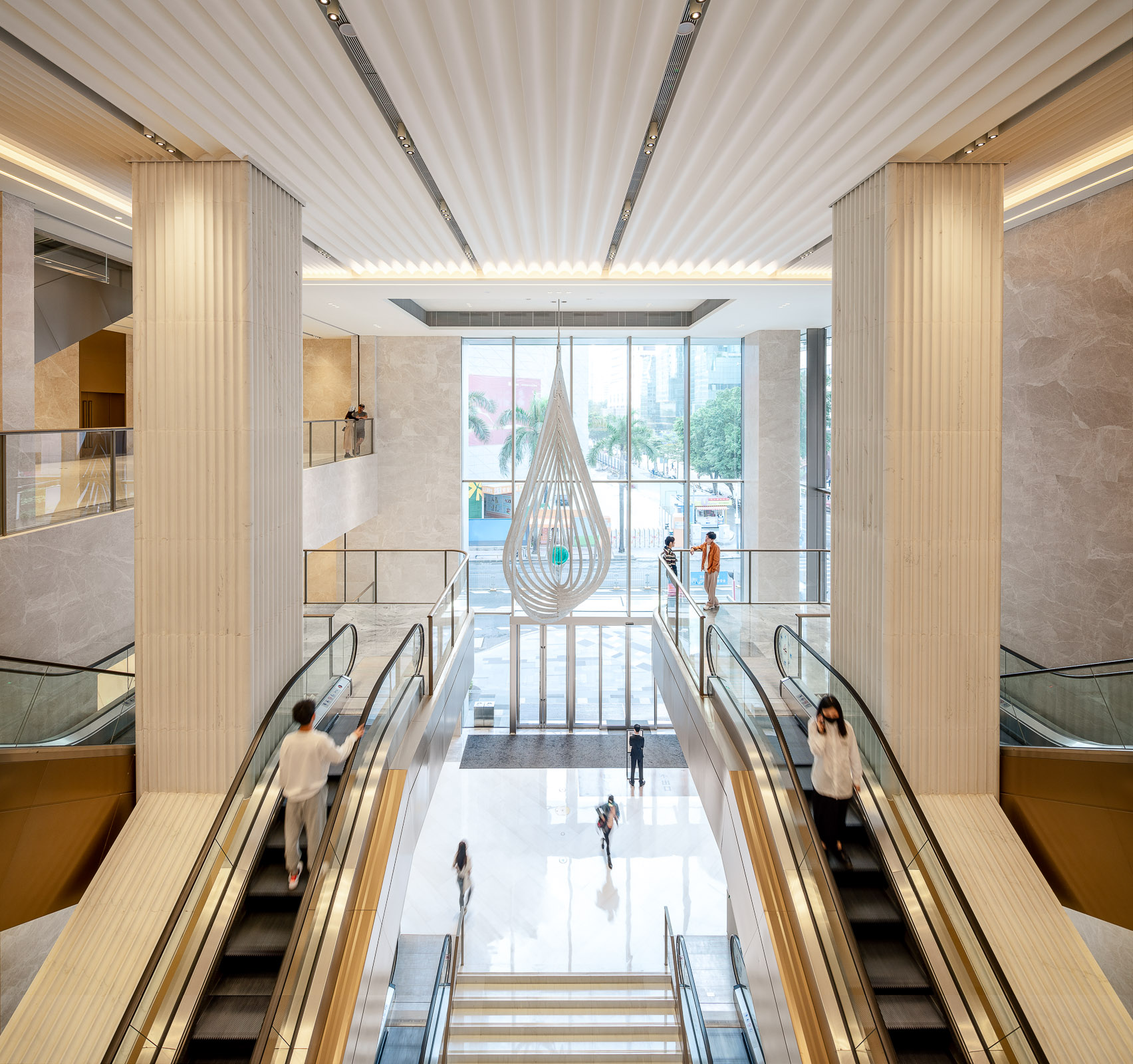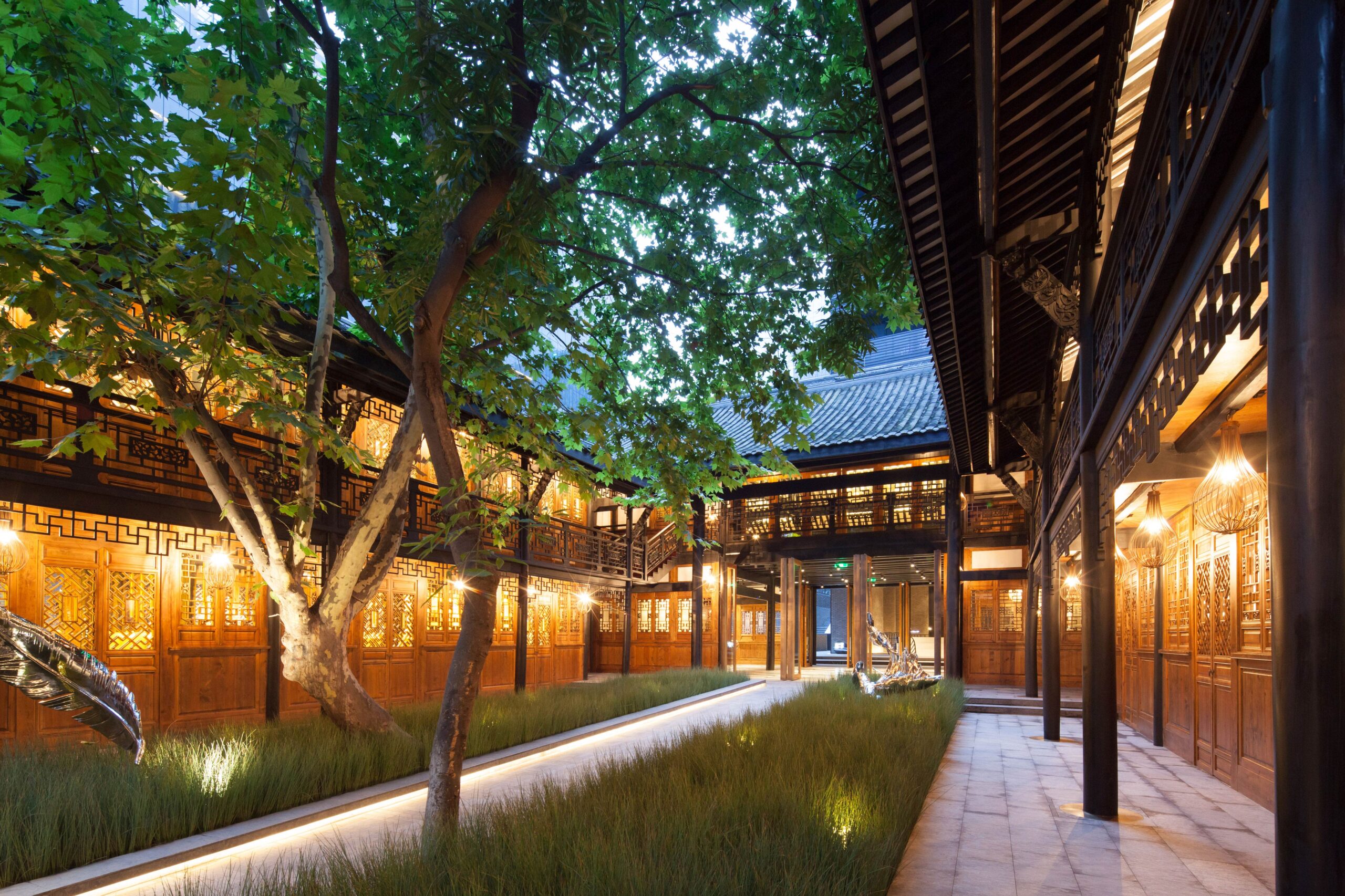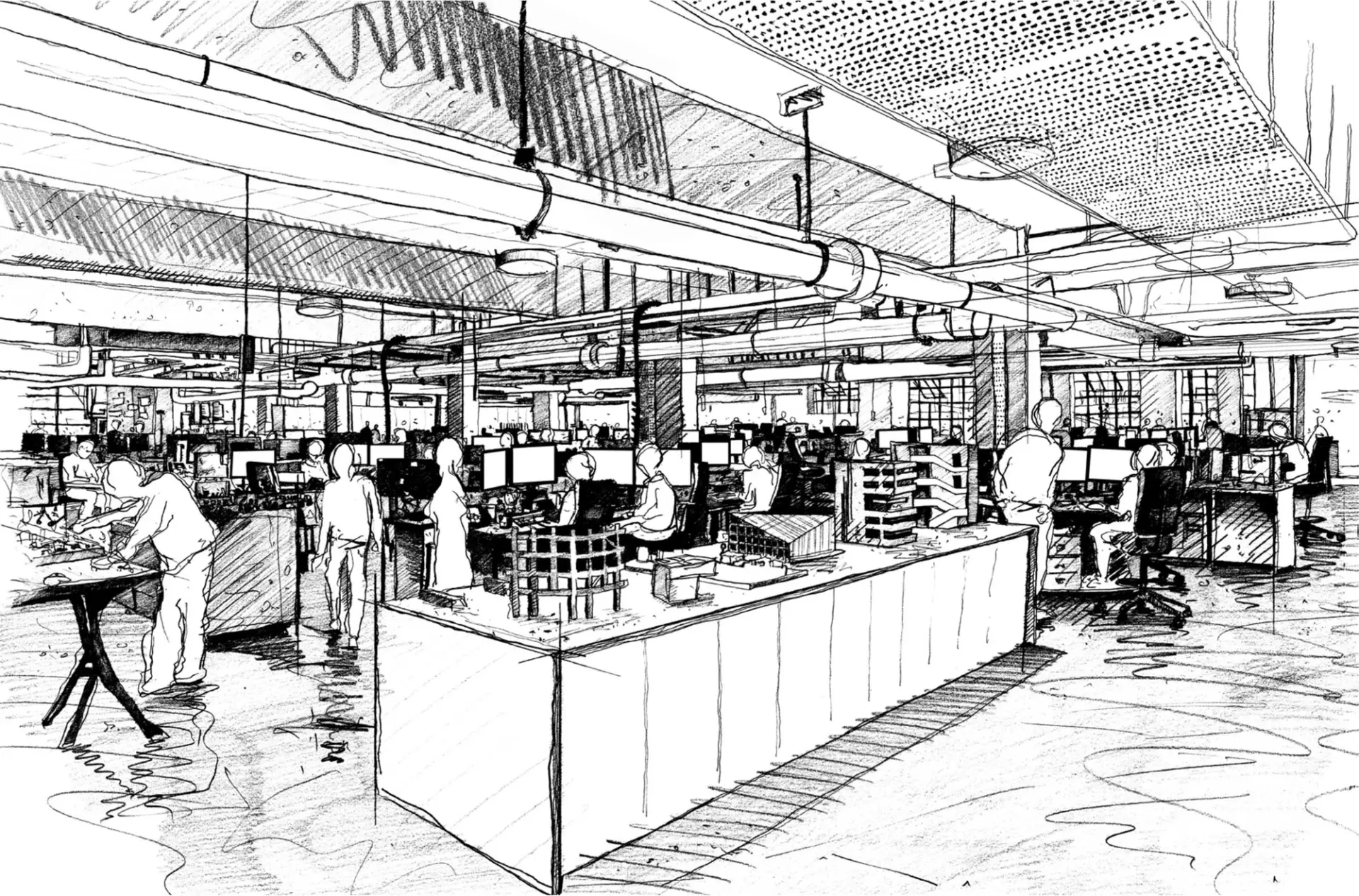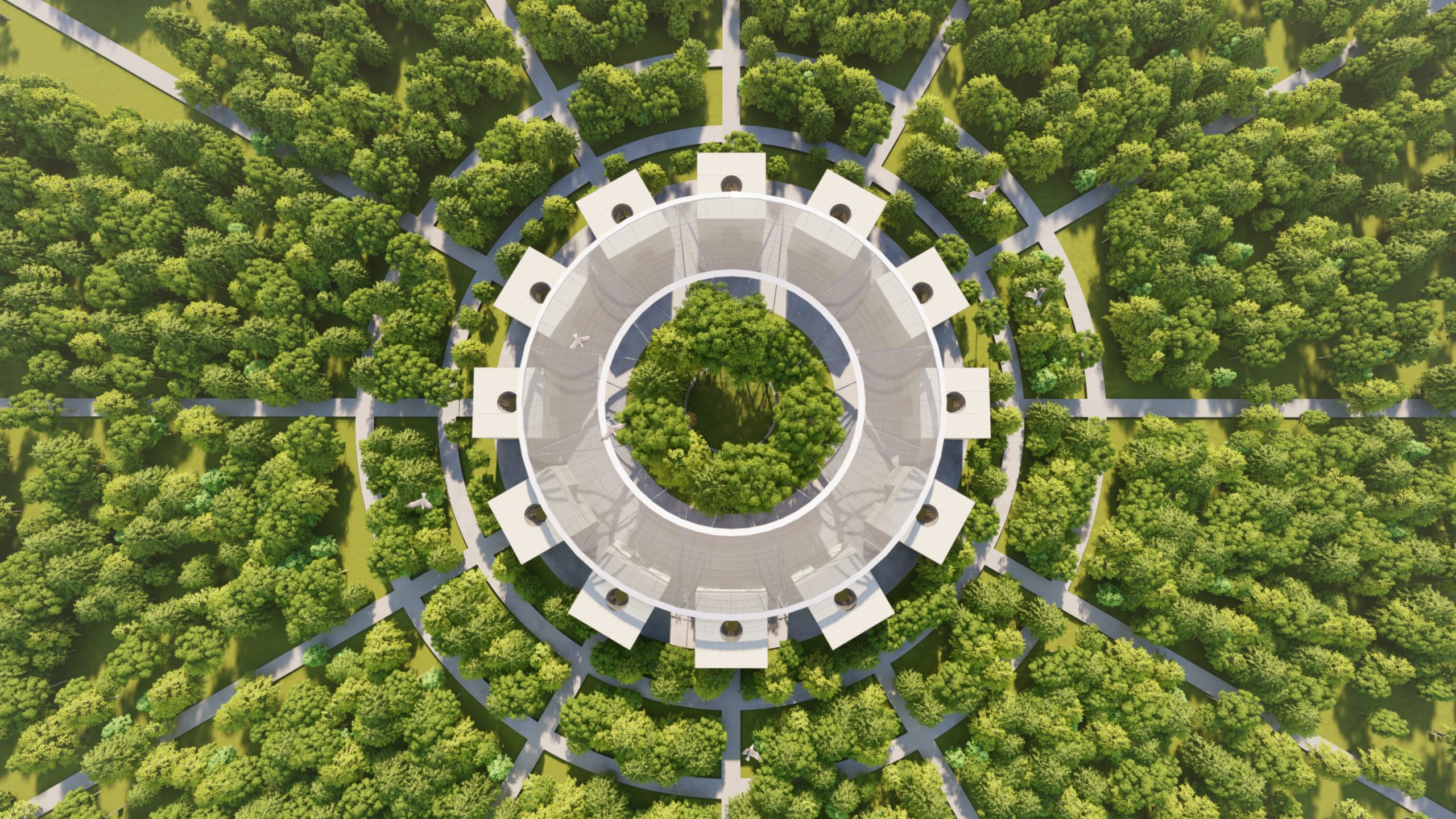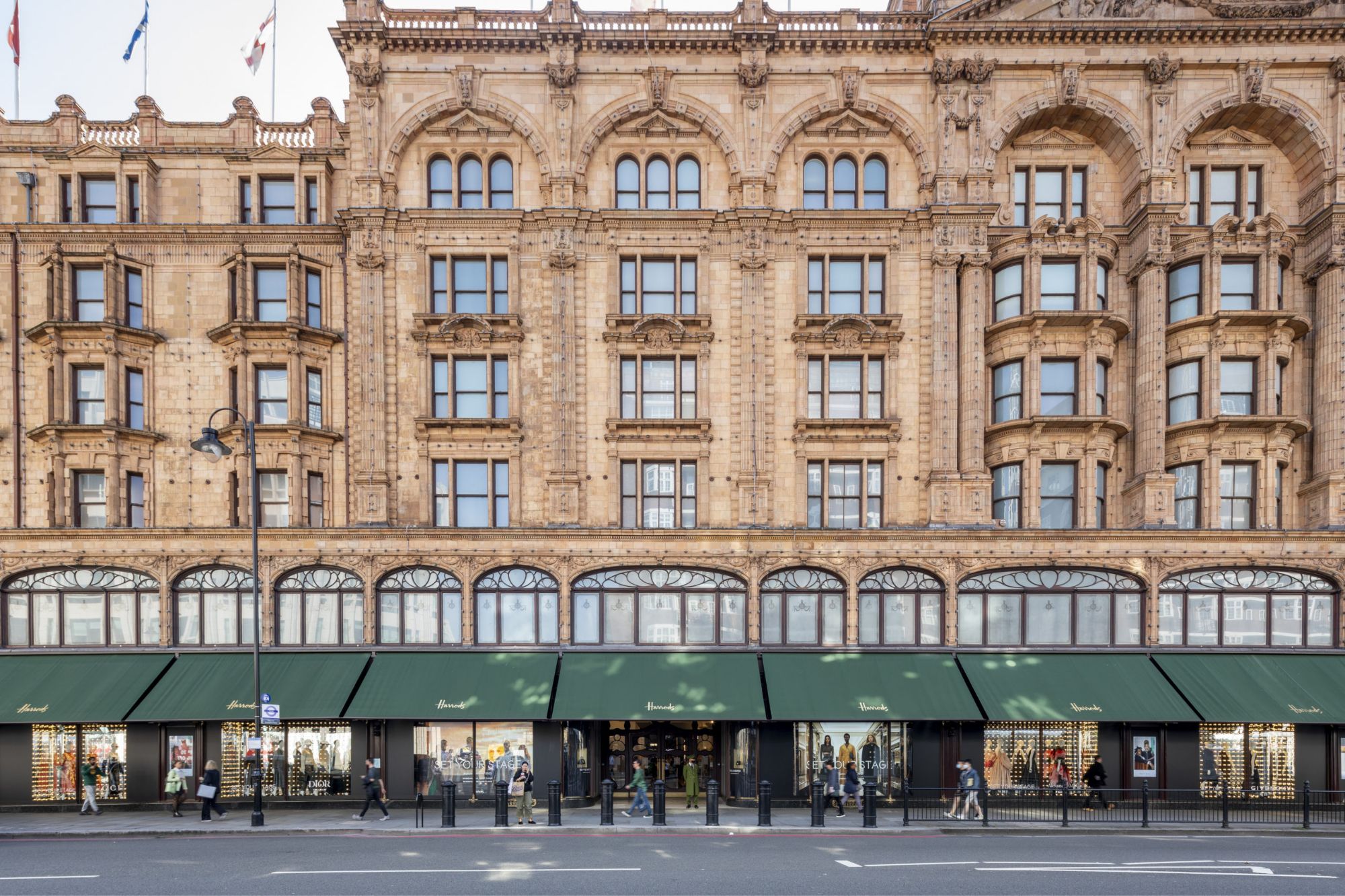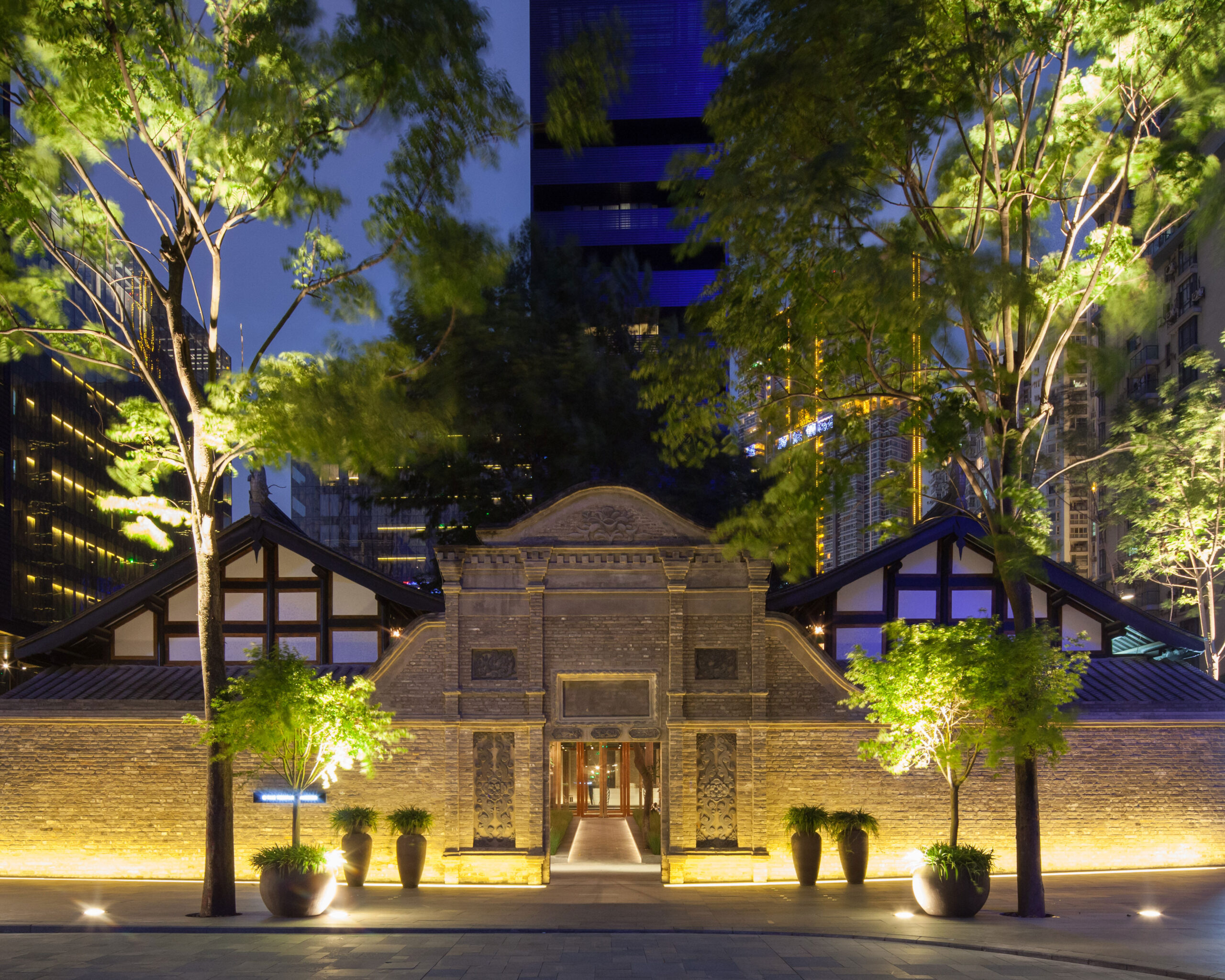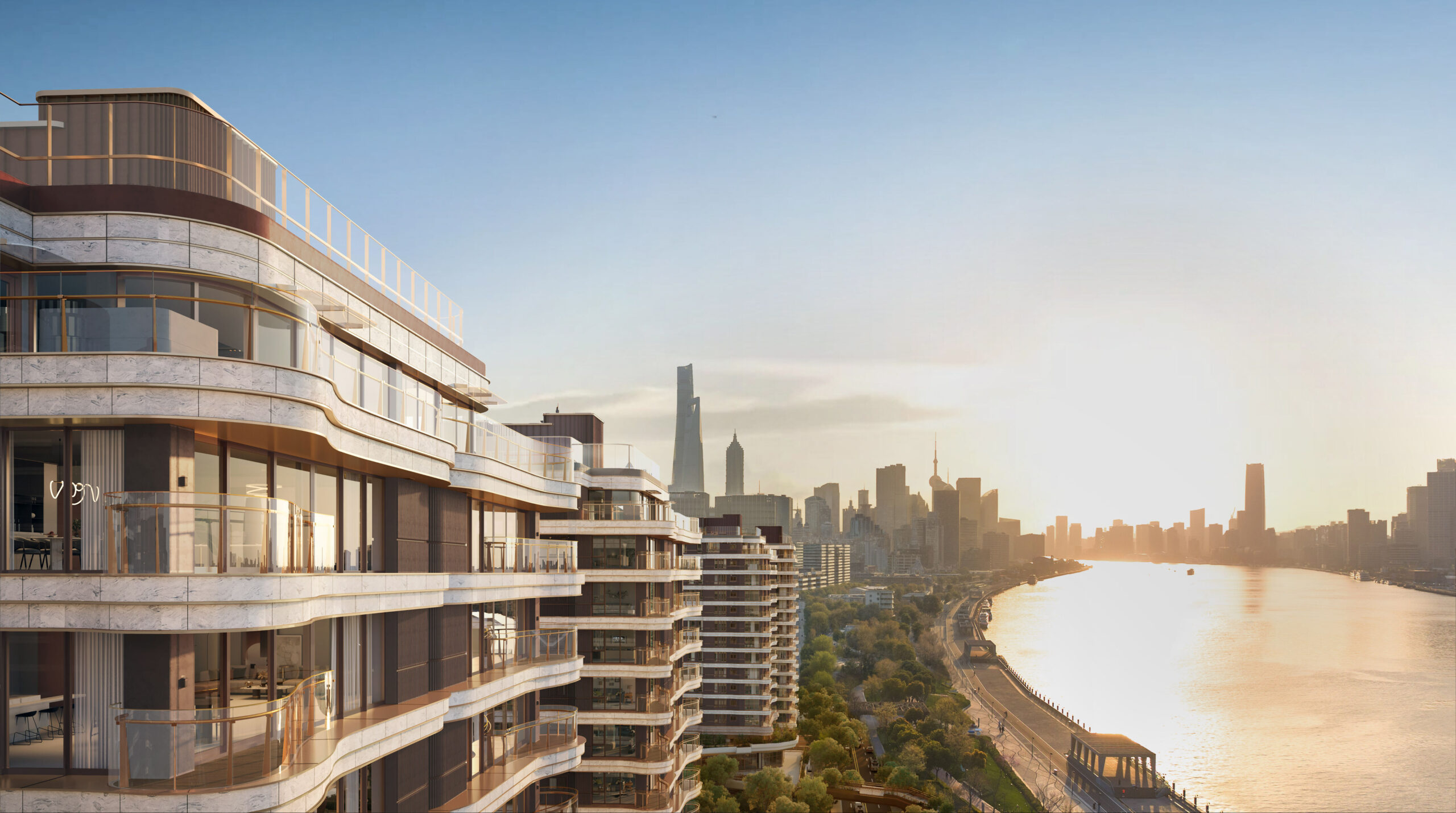
Flowers and vegetables are grown amongst the Art Deco skyscrapers in downtown Detroit. © Cecilia Lindström
Ten years ago I spent a month in Detroit. It was around the time that the city filed for bankruptcy following decades of economic decline, widespread corruption and abandonment. Originally built for 2 million people, Detroit’s population was down to only 600,000, and as the city crumbled, it gave way to a wilderness that reclaimed large parts of downtown, taking over empty plots and buildings. Pockets of lovingly curated nature spaces popped up in unlikely locations, and Michigan’s ‘Right to Farm Act’, which grants permission to farm within the city limits, birthed a wave of urban farming projects, revitalised blighted neighbourhoods and brought homegrown food to local residents. Nature became abundant, wild and productive, changing my preconceived ideas about what a city could look like.
Like Detroit, London was once a wild place, incorporating rivers, marshland, heathland, grazing animals and semi-wild edge-lands. But nature diminished as the city densified, and the majority of London’s big nature spaces were gobbled up by suburbanisation during the 1800s. In a quest to make the city healthier and more liveable, filthy rivers were culverted and insalubrious marshland was filled in. As a result, us modern urbanites suffer from a lack of nature, and disadvantaged neighbourhoods are disproportionally affected. Living with nature has become a privilege; England’s most affluent urban areas have five times more public green space than the most deprived wards.
To combat nature inequality, the UK Government has introduced an Environmental Improvement Plan to ensure that every UK household is located within a 15-minute walking distance of green space or water. Biodiversity Net Gain (BNG) obligations, which will come into force next year, will go some length to infuse more nature into urban neighbourhoods, and it will be essential to ensure that uplifts happen on site or locally so that communities impacted by densification can benefit. But BNG alone will not be enough to establish the type of strategic landscapes that can bring about a step change – we need a more concerted effort.
London Wall Place in the city of London has an acre of new public gardens at its heart. Make's scheme also includes green walls and roof gardens which further enhances the biodiversity of the area. © Make Architects
Planners, developers and placemakers have the potential to amplify and redefine urban nature, allowing it to be wilder, more diverse and self-regulating. This requires a shift in mindset; we need to overcome our addiction to tidiness and develop a greater tolerance for the types of landscapes that can support the complex ecosystems that are vital for the health of the city, urban wildlife and people. With more than 50% of the world’s population being urban – in the UK it is a staggering 84% – we need to get this right.
It’s easy to think of wild nature as something that exists outside of cities, but urban cores have enormous potential for nature integration, which is essential to ensure resilience and liveability in a future impacted by climate change. If designed well, multifunctional landscapes can provide essential nature-based solutions such as carbon sequestration, water and air filtration, flood mitigation, and temperature regulation.

Located in Salford, Greater Manchester, Make's Eden office building enhances urban biodiversity with a living wall facade. The largest of its kind in Europe, the living wall features 350,000 plants spanning 32 species. © Make Architects
Built up areas can be 10 degrees hotter than their surroundings, but it’s estimated that tree coverage of 40% or more can lower summer daytime temperatures in cities by as much as 5.5 degrees. Trees and soft planting attenuate solar radiation, reduce heat through shade and do something called evapotranspiration, which is water evaporation with a cooling effect. This reduces the need to mechanically regulate temperatures, which also reduces emissions from greenhouse gases.
With all of these benefits in mind, landowners with the support of the GLA, Westminster and technical guidance from Arup, formed Wild West End – a partnership which aims to increase nature in central London. To date, a significant increase in green space has been delivered across the estates’ portfolios on rooftops and building facades but imagine if Westminster could create superblocks like those in Barcelona, where one in every three streets is given over to nature and people.
Increasing nature in cities has been proven to improve cognitive ability and reduce allergies, asthma, cardiovascular disease, stress and depression. Spending time in nature also allows beneficial microbes to colonise our gut, supporting our immune system. Overall, it’s estimated that £2.1 billion in healthcare costs could be saved every year if all English households had access to quality green spaces.

Make's Elephant and Castle Masterplan introduces several key public green spaces to the South London neighbourhood, creating a vibrant setting for nature, wildlife and beautiful new community spaces. © Make Architects
Living with nature not only makes people healthier but also calmer. A study from New Haven in Connecticut found that an increase in tree canopy cover reduced violent crime. Another project in Philadelphia, which sought to ‘green’ scrap land, saw a fall in gun violence, vandalism and burglaries. Other studies have found that there’s less graffiti, vandalism and littering in tree-filled outdoor spaces than in comparable spaces without plants.
The UK is one of the most nature-depleted countries in the world. We’ve lost 69% of our wildlife since the 1970s, and the State of Nature Report published earlier this autumn found that one in six species in the UK are at risk of extinction. This is serious, because we depend on plants and wildlife for planetary health as well as our own survival. To tackle the biodiversity crisis, there is now a Rewild London Fund, which will restore or create over 365 hectares of landscapes for plants and animals, with the added benefits of cleaner rivers, safer air and the joy of sharing our city with wildlife. Furthermore, if we can nurture an affinity with nature and gain a greater understanding of our place in the ecosystem, it’s likely we will also care more about nature, which is essential if we’re to address many of the lifestyle choices that affect our environment.
Humans are only 1 of 15,000 species living in London, but we’re quite disconnected from our non-human neighbours. The author and rewilder Isabella Tree is advocating for the reintroduction of grazing animals in London’s urban green spaces; animals such as cattle, ponies, pigs, sheep and geese, as well as llamas and alpacas, are all suitable for city parks. The benefits of grazing are quite clear – these herbivores help manage green spaces, fertilise and aerate soil, spread seeds, and create habitats for a range of other species.
In Sheffield the council decided to reduce a four-lane inner city road to two lanes, transforming 1.5km of redundant road surface into a densely planted urban meadow with a wild character rarely seen in cities. The pioneering plantsman and professor Nigel Dunnett created a ‘designed ecology’ for the space using non-native steppe vegetation with a high visual impact and minimal need for maintenance. The landscape is self-generating, biodiverse and integral to the city’s flood mitigation strategy. This wilding approach is not about restoring pristine nature but creating novel ecosystems that do well in the UK – both now and in the future, taking a changing climate into account.

Mayfield Park in Machester by Studio Egret West provides a sequence of biodiverse and climate resilient nature spaces connected by a meandering river. © Studio Egret West/Jarrell Goh
In Manchester, Studio Egret West has designed the new 6.5-acre Mayfield Park, injecting a sizeable chunk of nature into an area that was previously deprived of green space. One of the key moves was to uncover the River Medlock and unlock its potential as an important biodiverse habitat to attract wildlife back into the city. The park’s naturalistic planting design creates a functional landscape that can withstand changing climate conditions and extreme weather events. The river floodplain has been colonised by a resilient landscape of indigenous species that will be shaped by natural processes, human use and animal disturbance.

The vertical forest of Bosco Verticale in Milan amplifies the greening of the site to deliver valuable ecosystem services and wildlife habitats. © Jose Jovena (Unsplash)
But nature doesn’t need big open spaces, it can be delivered on compact urban plots, facades, roofs and car park podiums. 20 bird species have been observed nesting in the vertical forest of Milan’s Bosco Verticale, designed by Boeri Studio, which delivers 30,000m2 of woodland on a 3,000m2 footprint. All this urban vegetation produces 19 tonnes of oxygen while absorbing 80kg of particulates and 30 tonnes of carbon dioxide from the air every year. The planting also shields the balconies and interiors from noise and regulates indoor temperatures.

Ron Finley's gangsta gardening project in South Central Los Angeles delivers seasonal produce and a revitalised public realm in an area that is classified as a food desert. © Stephen Zeigler
We have become accustomed to our urban nature spaces being visual and unproductive, but urban food growing engages and feeds communities worldwide. In South Central Los Angeles, Ron Finley’s food forest project is revolutionising urban gardening and has prompted a change in the law to allow Los Angelites to plant vegetables on their sidewalks. Ron’s garden brings beauty and respite to a deprived area, and now he is ‘gangsta gardening’ across LA, empowering local communities to transform food deserts into food sanctuaries.
Urban nature can take many guises, and the opportunities to weave functional ecologies into our cities are endless. But we need to shift our mindset and make nature integration an essential part of our placemaking agenda, and we need to think bigger – making way for reforestation, re-naturalised river systems, wetlands and heathlands in and among the places where we live. Imagine if we could get lost in forests inside the city, swim in rivers and forage food on our way to work. It is entirely possible, but only if we design for nature with the same enthusiasm that we have for buildings.





